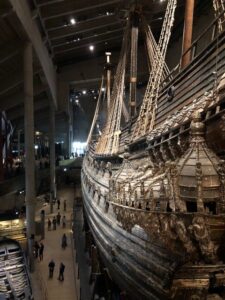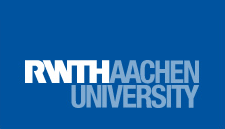Schlagwort: ‘bachelor’
Go abroad. Go to Sweden.
- Business Administration and Engineering: Materials and Process Engineering B.Sc.
- Sweden, Helsingborg
- RKW Sweden AB
- April – October 2022
Ah, what a great summer…looking back now, it feels more like a big vacation than a semester of working. Maybe because I did so many great after- work activities, maybe because my internship itself was nice or maybe because now this time is over and it is winter in Germany. 🙂
I arrived in the middle of April and at first, things started off medium well. My room, rented by the company, was in the basement of a villa with quite a few alcoholics in the building. They were all nice to me, but this was something new and scary to me. Over time and with changing apartment mates it got better, but the first months were a bit hard because I did not feel at home there. Here we already have a few learnings about Sweden; first, almost nobody in Sweden rents apartments, so rental websites are a bit weird and mostly people in unstable points of their lives or students rent apartments. Also, Sweden has super strict laws and crazy prizes when it comes to alcohol, you are for example not allowed to drink alcohol on the street.
Let’s get to a more fun topic, work 😉 For me, working at a Swedish location of a German company was great. The atmosphere was good, the people were really nice and everyone spoke English well. Another great thing about Sweden is, how far it is in all terms of equality. If I was a woman or a man, the site management or the little intern, I felt like everyone was equally important and valuable. This is not the case in all companies or countries and so it was very interesting to have the many times stressed and not so relaxed German part of the company in comparison to the Swedish part I was working at.
If you want to experience a great working atmosphere, try working in Sweden. 🙂
One thing about the chill atmosphere, which almost irritated me, was the amount of Fika (coffee breaks) they take. Sometimes 45 minutes per day made me feel a bit unproductive, but many of my colleagues there were very comfortable with that. Another thing I had heard about before, is the swedes awkwardness when it comes to small talk. My own experience was, that if you have any connection to the person, small talk is fine and they will be really nice. They won’t go out of their way for you, like speak English during the entire lunch because you don’t speak Swedish, but someone will try to integrate you a bit. If they don’t know you at all, they will try not to talk to you at all, in public for example.
I did have a bit of problems in the beginning to get involved socially, but through my hobby sailing, some colleagues and Facebook, things slowly picked up. Facebook is actually one of my biggest recommendations for anyone going to Sweden. If you are trying to rent an apartment, inform yourself on clubs or social groups. If you want to find friends, look there. What works really well is hiking groups. I found that the people there are usually very open, come from everywhere and on top of that you are exploring the area. What happened to me is that one girl saw one of my hiking plans in one group, texted me and we became friends. We even made a trip to Stockholm together in the last weeks of my time in Sweden!
Now let’s come to my specific Skåne recommendations:

© Kuhlmann, Selma
-Kallbadhusets, beautiful saunas at the sea, where you can switch between bathing in the cold sea and sitting in the sauna. Very relaxing and not very expensive. (about the price for a cup of beer in Sweden;))
-Venn island in the middle of the Öresund, a beautiful place with fun yellow tandem bikes for exploring the nature.
-Kullaberg. An awesome hiking spot northern of Helsingborg.
-The bakery två systras in Helsingbog. They have a lot of awesome traditional Swedish Fikabröd like Kardemummabullar or Vaniljhjärta. My personal cake favorite: the Budapest.
-The Vasa museum in Stockholm. We were also a bit unsure of going because it does cost some money, but it was all worth it. Such an interesting and greatly made museum!
My conclusion: Go abroad. Go to Sweden. Start somewhere new. Learn more about yourself.

